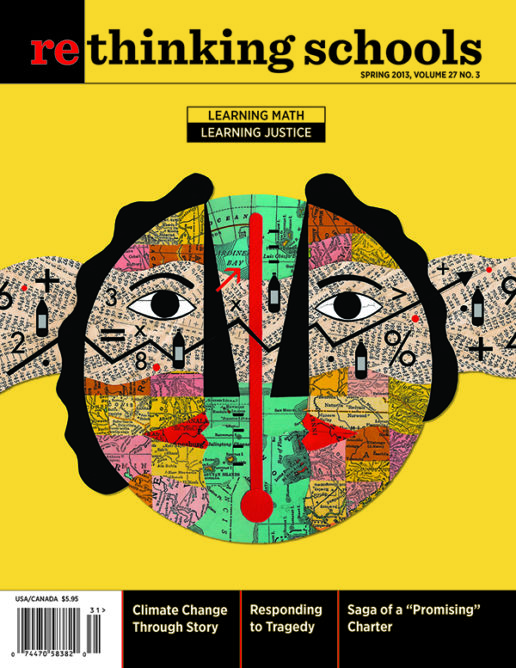Preview of Article:
Creative Conflict
Collaborative playwriting
Illustrator: Colin Matthes
The conflict in my classroom was explosive: defiant teenagers, raging parents, broken promises, betrayal among friends. Students were on their feet, shoving furniture, glaring menacingly, raising their voices. As I surveyed the room, part of me was very pleased.
In some ways, the project this class had undertaken—creating collaborative plays about issues important in students’ lives—was going very well. The students, 20 high school seniors, seemed engaged and invested in the work, from brainstorming and improvising to writing and revising. The class had read and watched a variety of dramatic pieces, and students had already written and performed some excellent monologues and short scenes. For this unit, we had started by generating an exhaustive list of themes and issues that interested students in the class. In the end, the students narrowed the list down to three topics—peer pressure, sexuality, and domestic abuse—and formed collaborative playwriting groups to explore each issue and create original plays.
The students were also proving that they had a clear understanding of one of the foundational concepts in playwriting—conflict. For the purposes of playwriting in our class, I had defined conflict in this way:
Conflict = want + obstacle
In order for an interesting conflict to develop, a character must have a want or need (for example, a young woman wants to play basketball), and there must also be something or someone standing in the way (for example, her grandma forbids her to leave the house). Students agreed that conflict is what makes drama interesting, and they quickly learned to incorporate it into the scenes they wrote in class.

